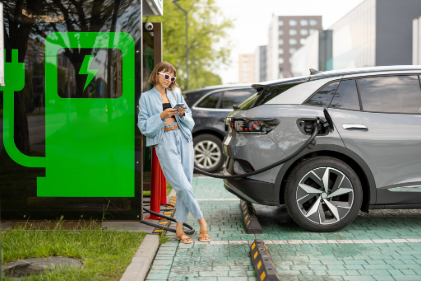INDEPENDENT DEALER
DFW area | (817) 821-2533
OUR BLOG
As automotive technology has been evolving, we’ve been seeing more alternatives to gasoline vehicles. However, you may be wondering what’s the difference between hybrid and electric cars. To help you out, DFW Distributor in DFW Area has this post for you.

With more automakers offering eco-friendly vehicle options, terms like “hybrid” and “electric” are becoming increasingly common. While both are designed to reduce fuel use and emissions, they operate in very different ways. Understanding the distinction between hybrid vehicles (HEVs) and electric vehicles (EVs) is essential for anyone looking to make a smarter, greener choice in their next car purchase.
Here’s a comprehensive breakdown of what sets hybrids and electric cars apart — from how they work to what it’s like to live with one.
Call DFW Distributor in DFW Area at (817) 821-2533 or visit AMSOIL's online store for help keeping your vehicle in the best shape possible.
Difference Between Hybrid and Electric Cars
1. How They’re Powered
The biggest difference lies in their power sources.
- Hybrid vehicles use both a gasoline engine and an electric motor. The two systems work together to optimize fuel efficiency. Depending on the design, the electric motor can power the car at low speeds, assist the engine during acceleration, or recharge the battery through regenerative braking.
- Electric vehicles run entirely on electric power, using a large battery pack and one or more electric motors. There is no gasoline engine and no fuel tank. They must be plugged in to recharge, either at home or a public charging station.
2. Fuel and Charging
- Hybrids never need to be plugged in. They use gasoline like a conventional car but get better mileage thanks to electric assistance. Some advanced hybrids, called plug-in hybrids (PHEVs), can be charged for short all-electric trips and then rely on gas for longer drives.
- EVs are fueled only by electricity. Charging times vary depending on the type of charger:
- Level 1 (standard wall outlet): slowest
- Level 2 (home charger): several hours
- Level 3/DC fast charging: 30–60 minutes for 80% charge
3. Driving Range
- Hybrid cars typically have a range similar to or better than traditional gas vehicles because they use gas and electricity together. Refueling is quick and easy at any gas station.
- Electric vehicles have a limited range based on battery size. Most modern EVs offer 200 to 400 miles per charge, although range varies with weather, terrain, and driving habits.
Range anxiety — the fear of running out of charge — is improving as battery technology advances and charging infrastructure expands.
4. Maintenance and Upkeep
- Hybrids still have internal combustion engines, so they require regular oil changes, spark plug replacements, exhaust system maintenance, and other traditional services.
- EVs, by contrast, have fewer moving parts and require less maintenance. There’s no engine oil, no transmission fluid (in most), and no exhaust system. EVs mainly require maintenance for tires, brakes, battery cooling systems, and software updates.
Trust in AMSOIL and their high-quality products to be your partner in your quest to maintaining your car.
5. Performance and Driving Feel
- Hybrids feel similar to traditional cars, but with smoother acceleration and often quieter operation during low-speed electric driving.
- EVs deliver instant torque, offering quicker acceleration and a smoother, quieter ride. The low center of gravity due to battery placement also improves handling.
6. Environmental Impact
Both hybrids and electric vehicles are more environmentally friendly than gas-powered cars, but EVs have the edge when it comes to emissions.
- Hybrids still burn gasoline and emit CO₂, though at lower rates.
- EVs produce zero tailpipe emissions. Their overall environmental impact depends on how the electricity used to charge them is generated (renewables vs. fossil fuels).
7. Cost and Incentives
- Hybrids
are typically less expensive upfront than EVs and are a good entry
point for drivers looking to save on gas without changing their fueling
habits.
- Electric vehicles have higher upfront costs, mostly due to battery prices. However, they benefit from:
- Lower running and maintenance costs
- Federal and state tax credits or rebates (where available)
- Long-term fuel savings
Over time, EVs can often be cheaper to own and operate, especially with rising gas prices.
Which One Is Right for You?
- Choose a hybrid if:
- You want better fuel efficiency without giving up gas entirely
- You frequently drive long distances and want quick refueling
- Charging infrastructure is limited in your area
- Choose an EV if:
- You want zero emissions and lower maintenance
- Your daily driving fits within typical EV ranges
- You can charge at home or nearby